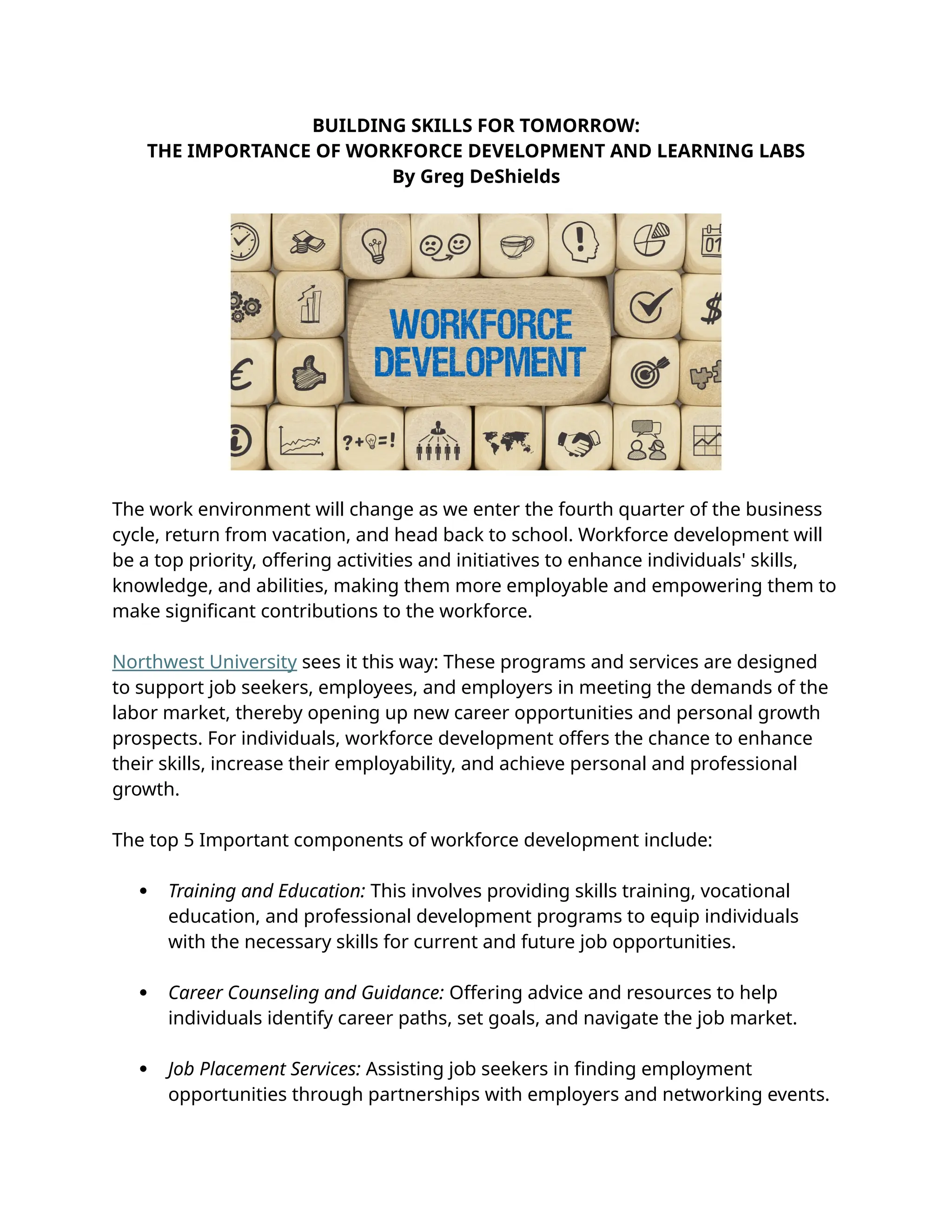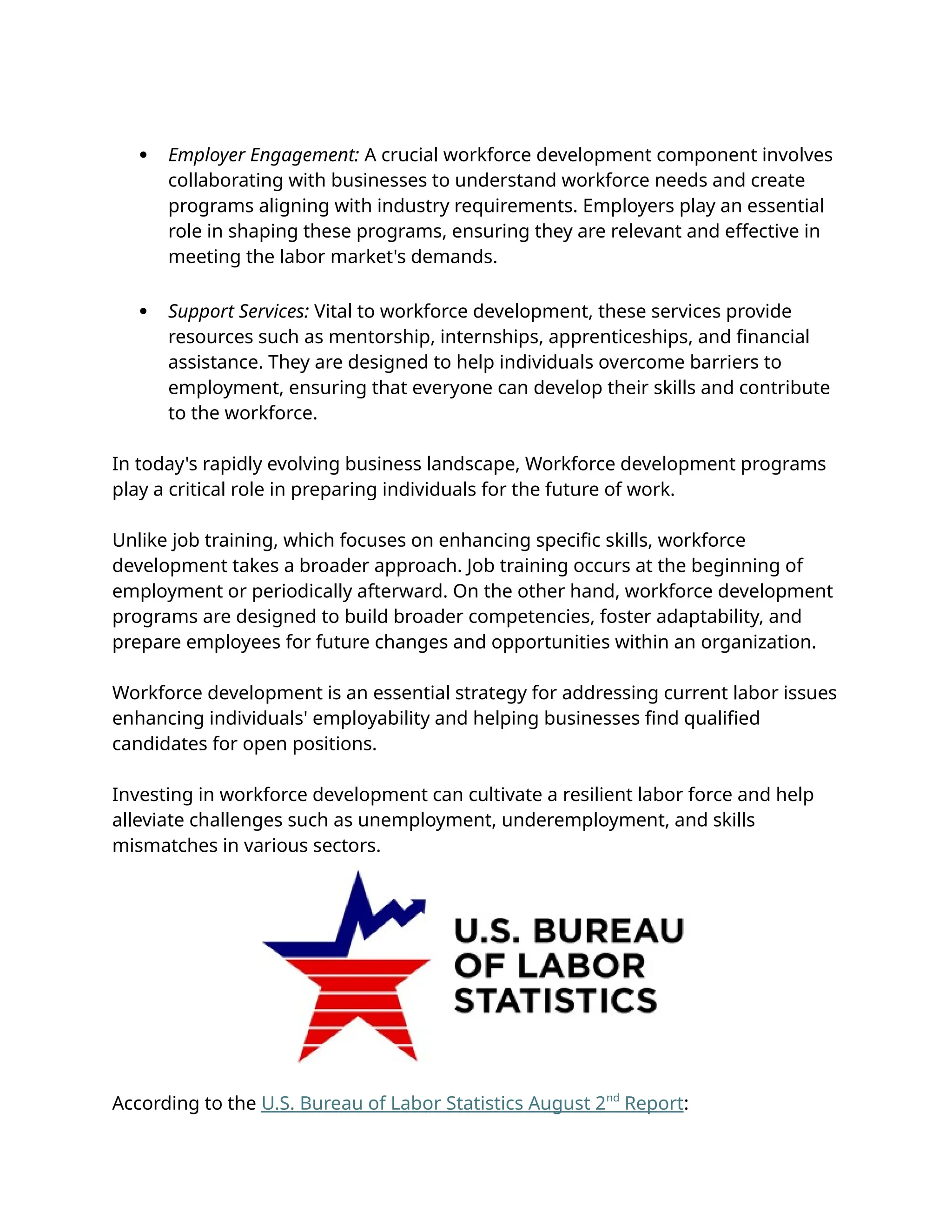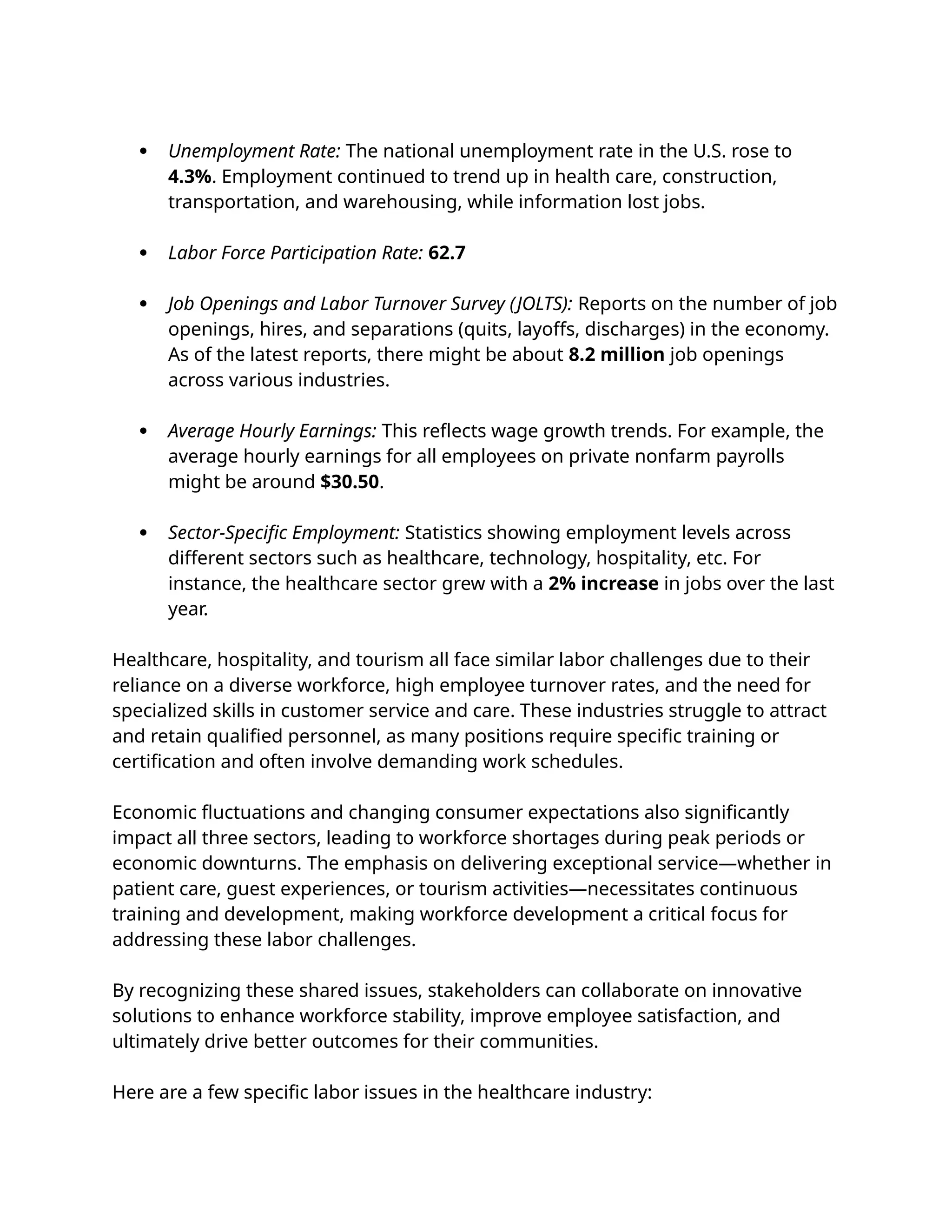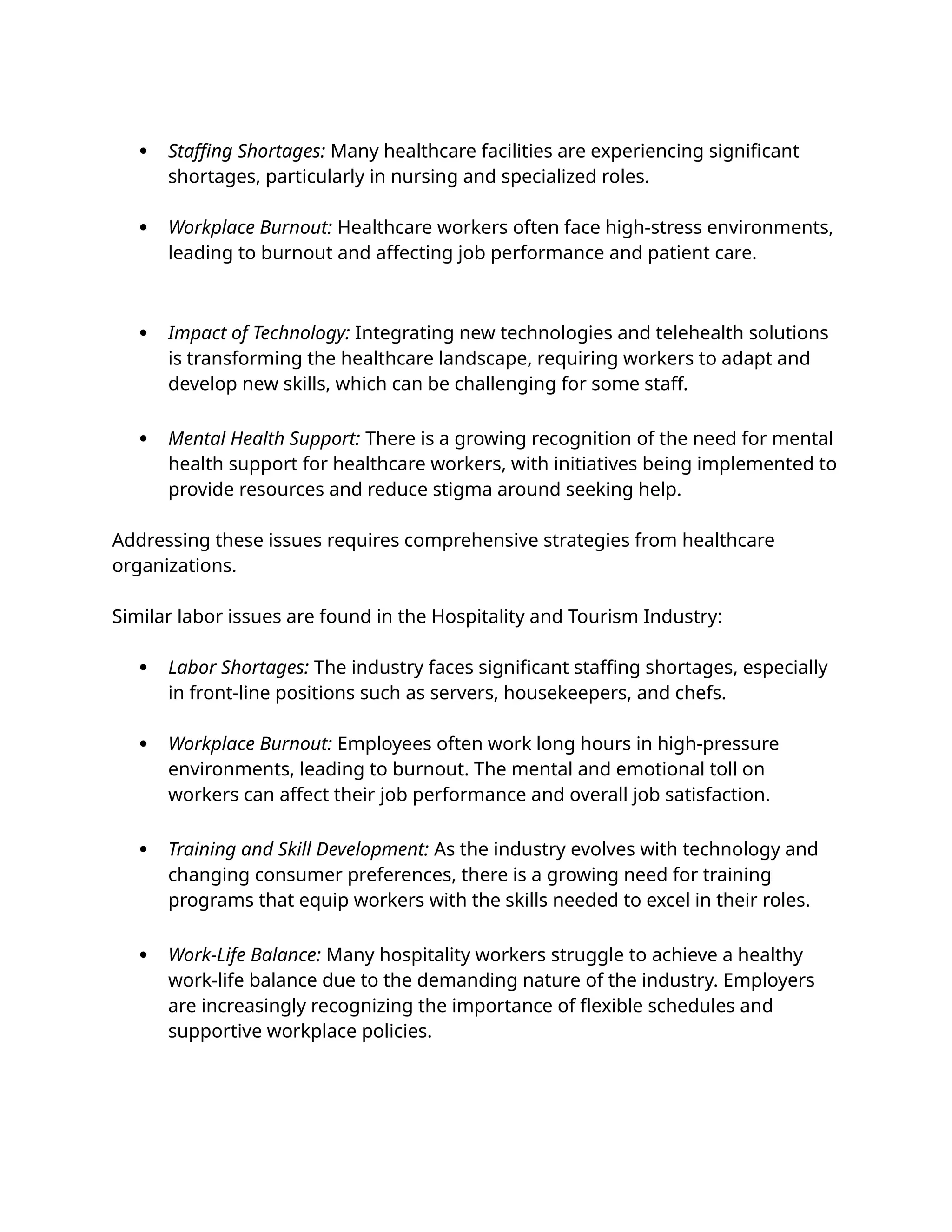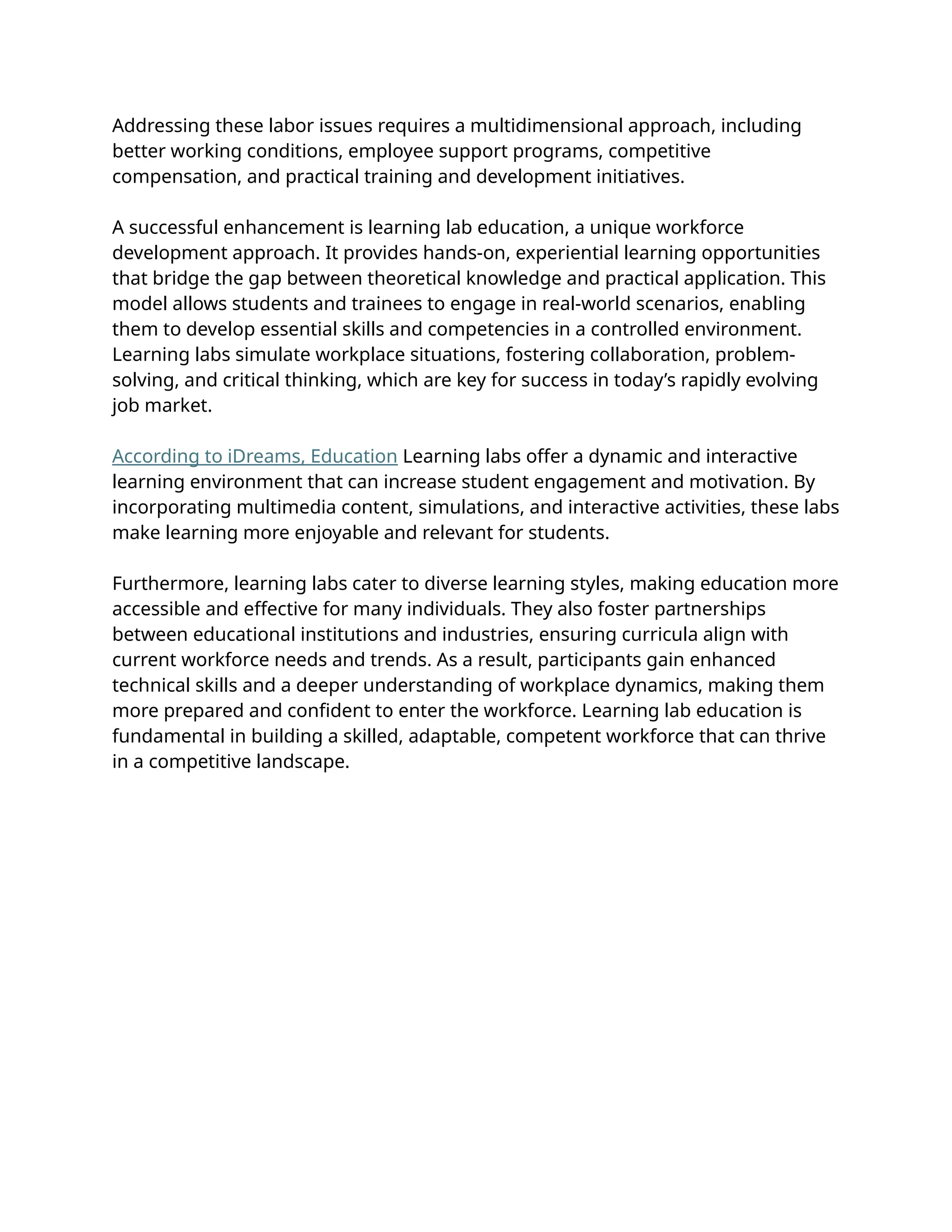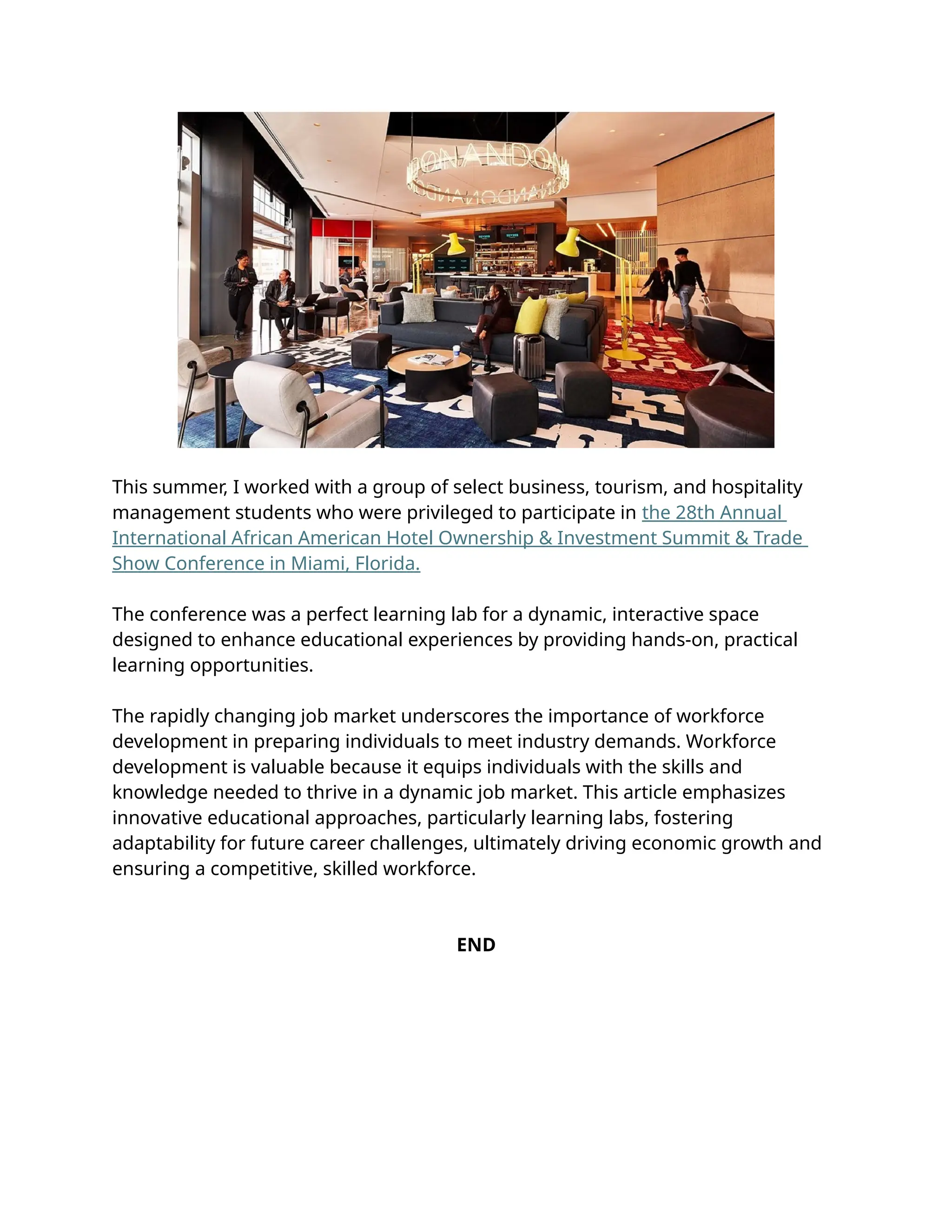The document discusses the critical role of workforce development in enhancing employability and meeting labor market demands, particularly in response to current economic conditions and trends. Key components include training, career counseling, job placement, employer engagement, and support services, with a focus on innovative approaches like learning labs that provide hands-on, experiential learning. The article highlights challenges faced in sectors such as healthcare and hospitality, emphasizing the need for comprehensive strategies to address staffing shortages, burnout, and the adaptation to new technologies.
